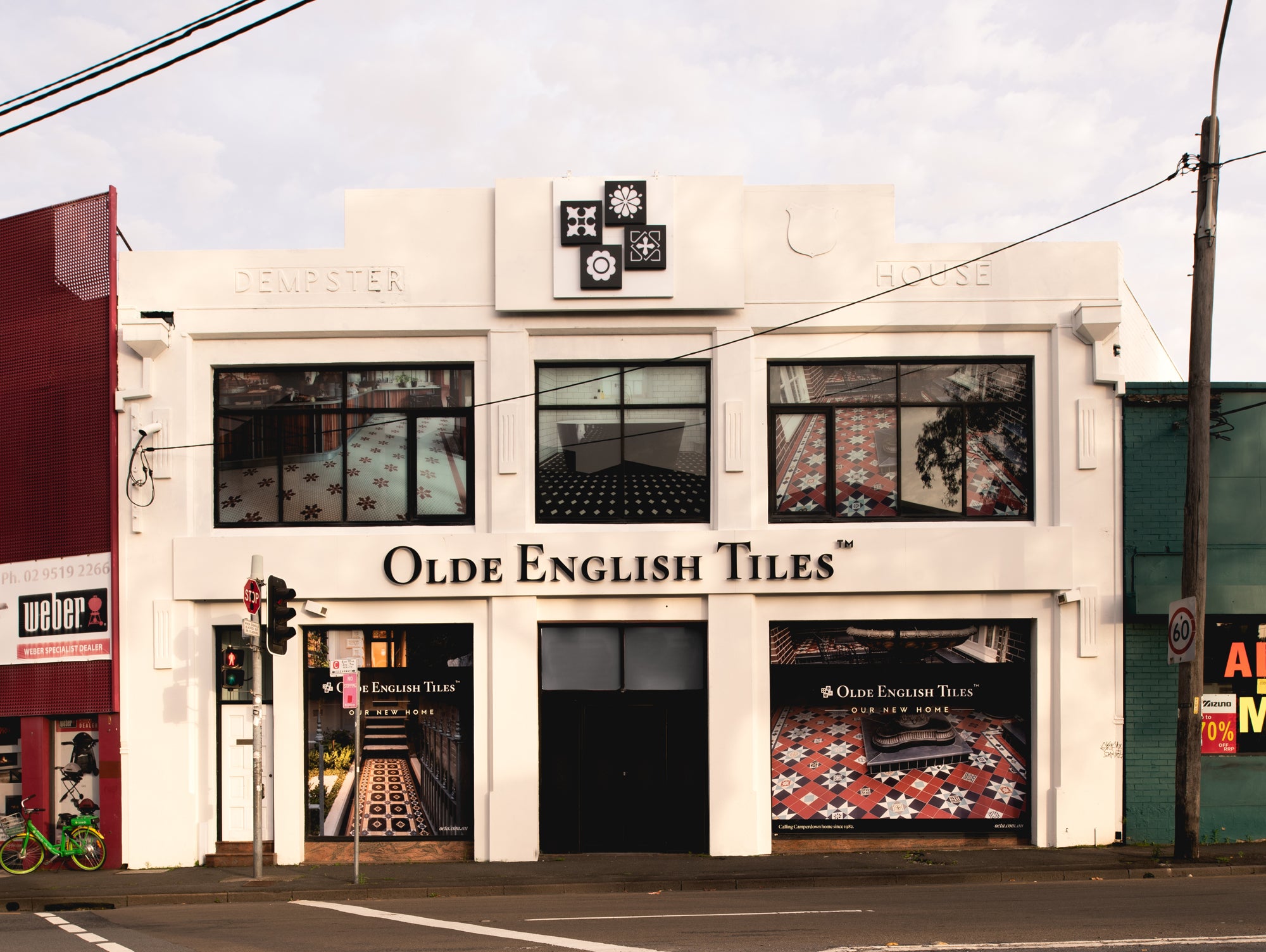Welcome to our Annandale showroom.
Olde English Tiles has the distinction of being the first company in Australia dedicated to the supply and installation of tessellated tiles, and the first tessellated tile showroom in Australia, opening its doors in 1984. These days there’s so much more to us than just tessellated floors.
Our location
Getting to our Sydney showroom is now easier than it has ever been. We’re located on Pyrmont Bridge Rd, at the intersection with Parramatta Rd, right opposite the Mobil - 7 Eleven petrol station and 50 metres from the James Squires’ Malt Shovel Brewery. Parking is never a problem. We have ample off-street parking right next door.
Address: 130 Pyrmont Bridge Rd, Annandale NSW, 2038
Phone number: (02) 9519 4333
Parking: available on site
Opening hours: Monday to Friday: 9 - 5pm, Saturday: 9 - 4pm
Appointments
Of course you’re welcome to just pop into the showroom, but we do suggest booking a free 20 minute consultation with a team member to receive expert advice on your project and to assist you in your experiments with patterns and colours.
Sam and the team look forward to meeting you and helping with all your tiling and bathroom renovation needs.
A treasure trove of tiles
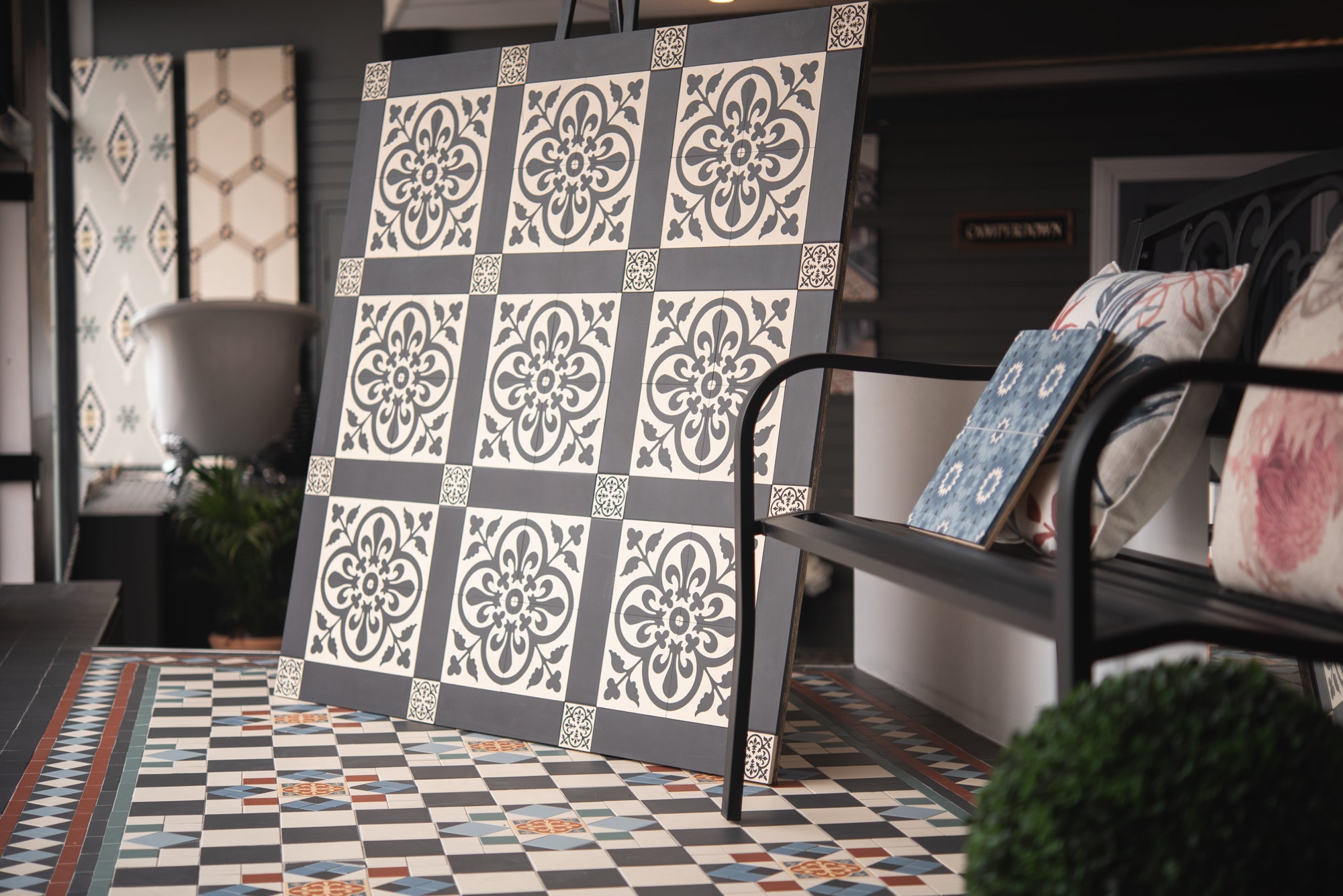
The name ‘Olde English Tiles’ is synonymous with beautiful tessellated tiles for Victorian and Federation houses & historic buildings, but our porcelain mosaics give you the added opportunity to authentically renovate your Inter-War bungalow or Streamline Moderne apartment.

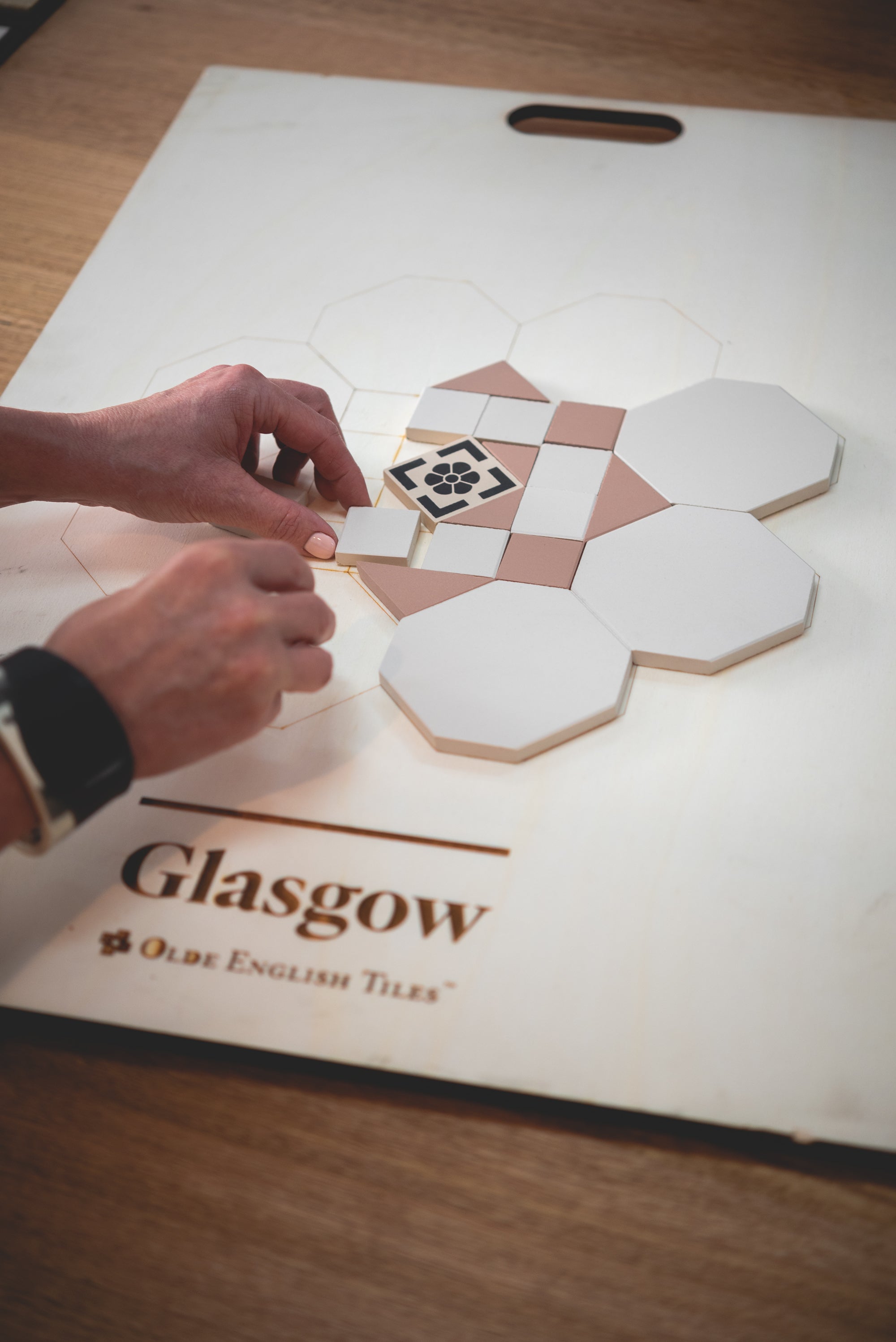
Our range of subway tiles, printed and embossed tiles & capping, produced in our own Australian factory, are a perfect complement to our floors. In addition, we offer an extensive range of tap & sanitaryware, plus a wide selection of outdoor products, including stone step treads, garden edging, pool mosaics, stone cobbles and external porcelain tiles - all displayed in an atmosphere that is warm, inviting, and easy to work in. Our tessellated play table is a particular favourite with customers.
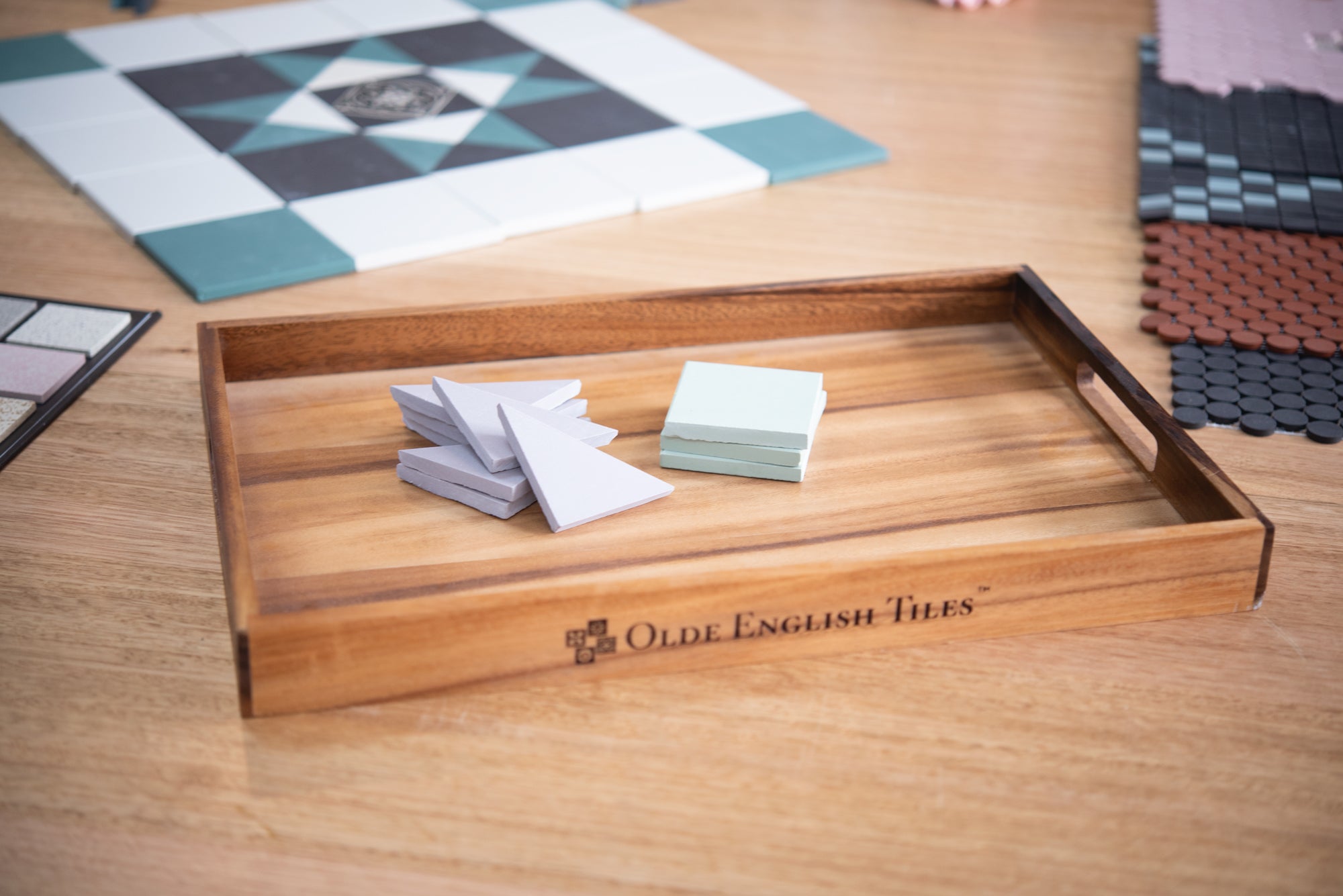
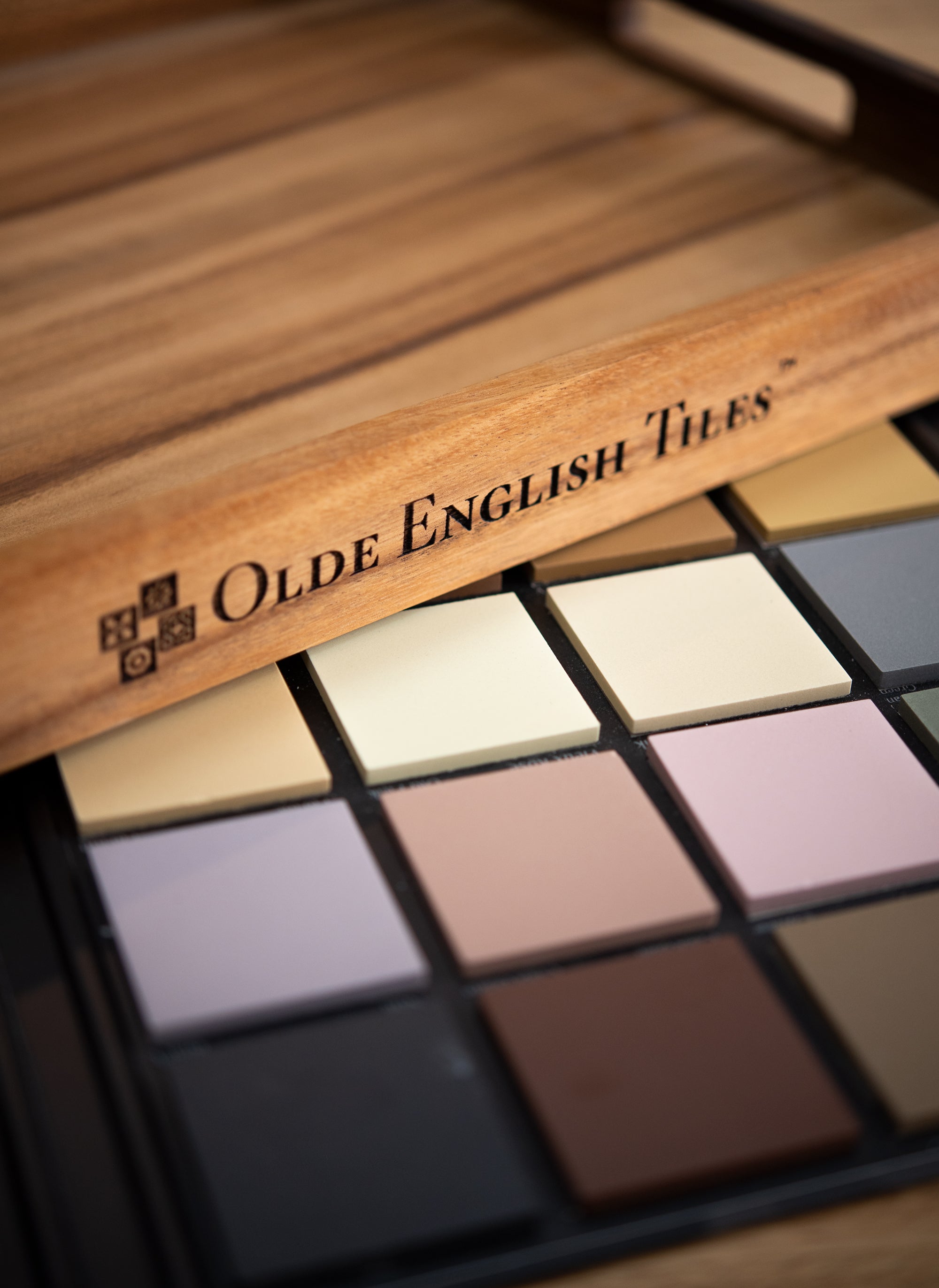
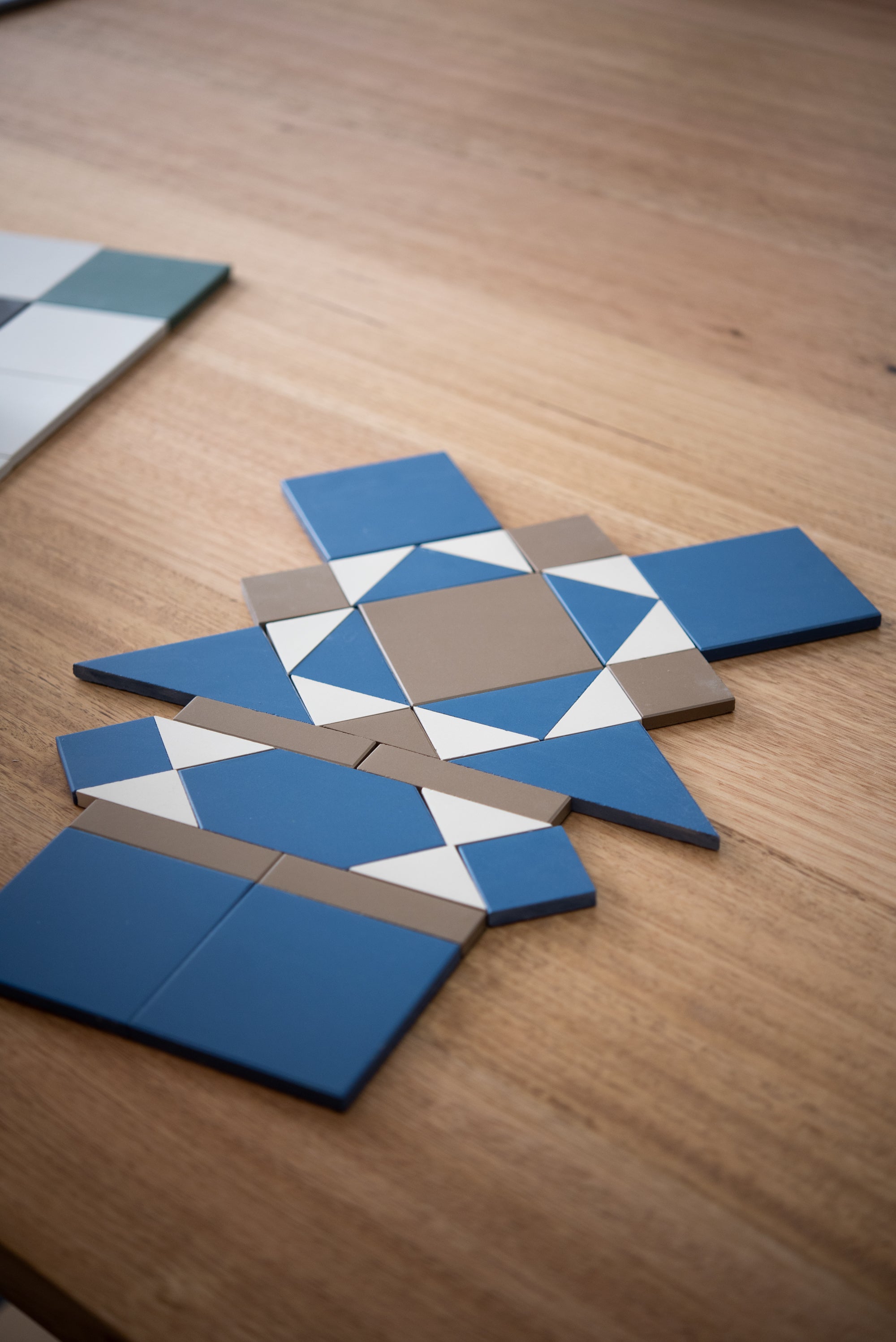
Dedicated Install Team
After you’ve visited our new showroom and selected the right tiles for your style of home in the colours that perfectly coordinate with your decor, you’ll want them installed by experts - tilers who know exactly what they’re doing, and will guarantee the quality of their work. Look no further. Olde English Tiles offers a highly skilled supply and installation service. Simply organise a time with our showroom staff for a consultant to visit you on site.
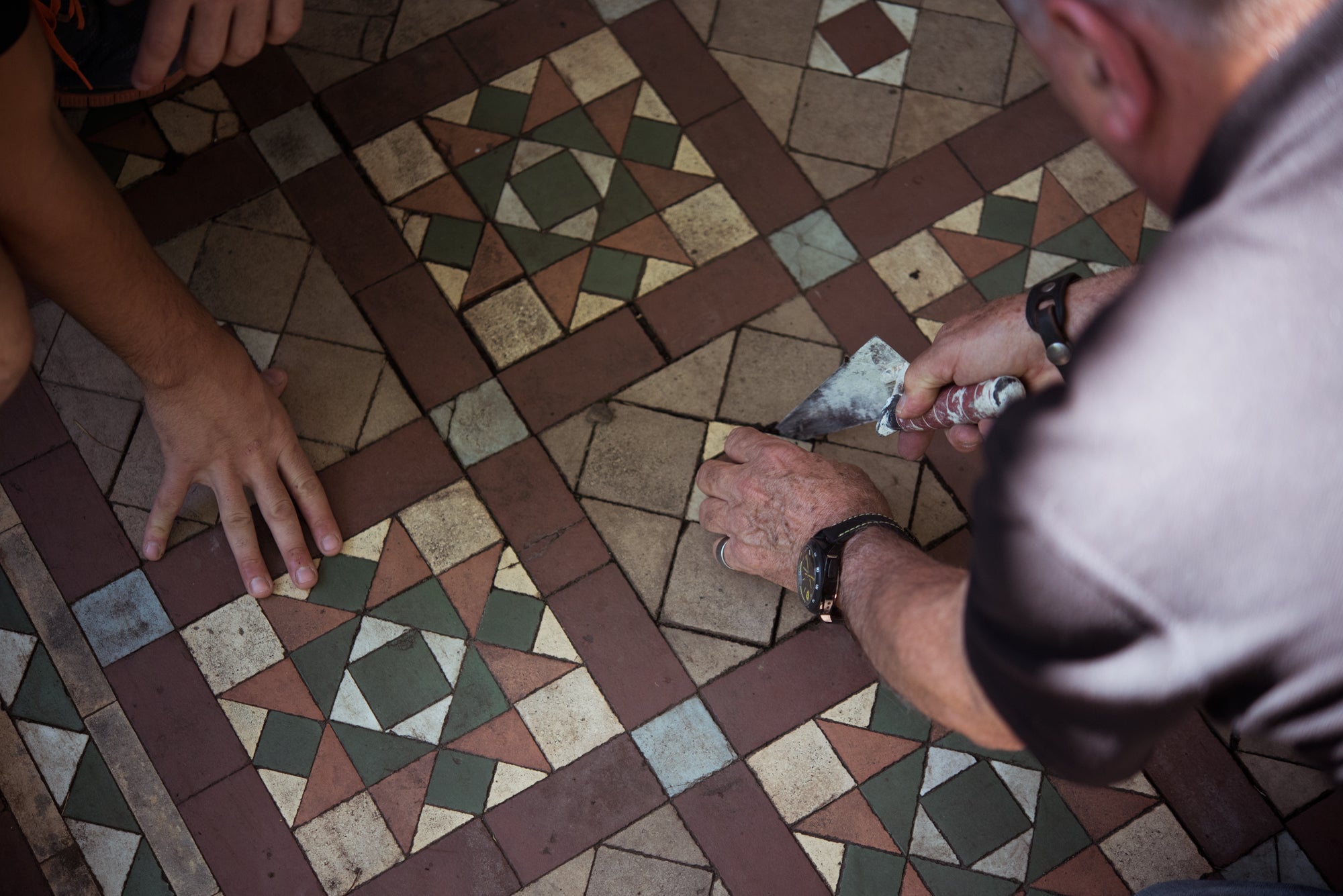
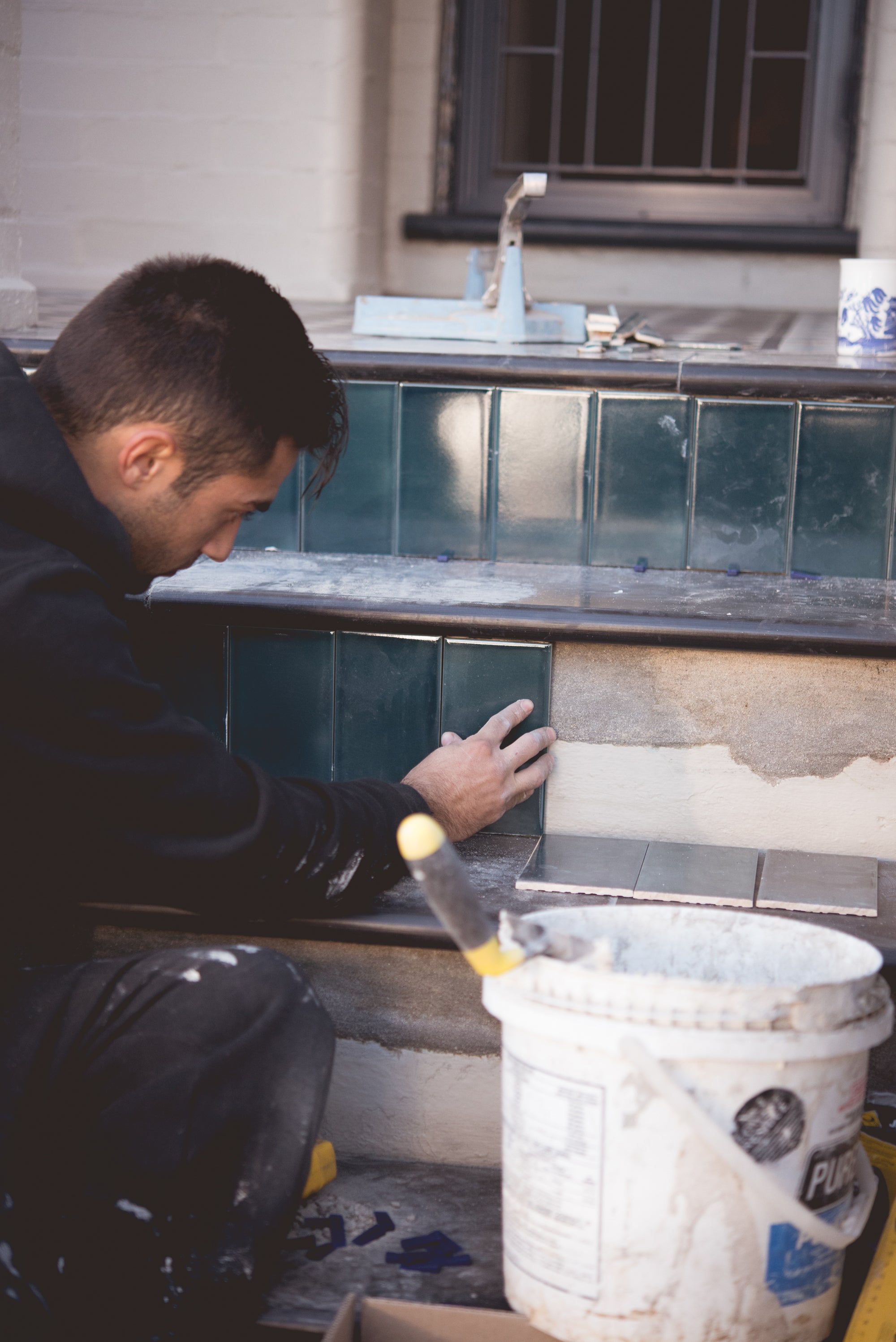

Bathroom Renovations
Our Sydney showroom also offers a complete bathroom renovation service. Don’t live in Sydney? Not to worry - our bathroom renovation service will travel; we are currently undertaking a major project in Maitland.
Sydney areas we specialise in
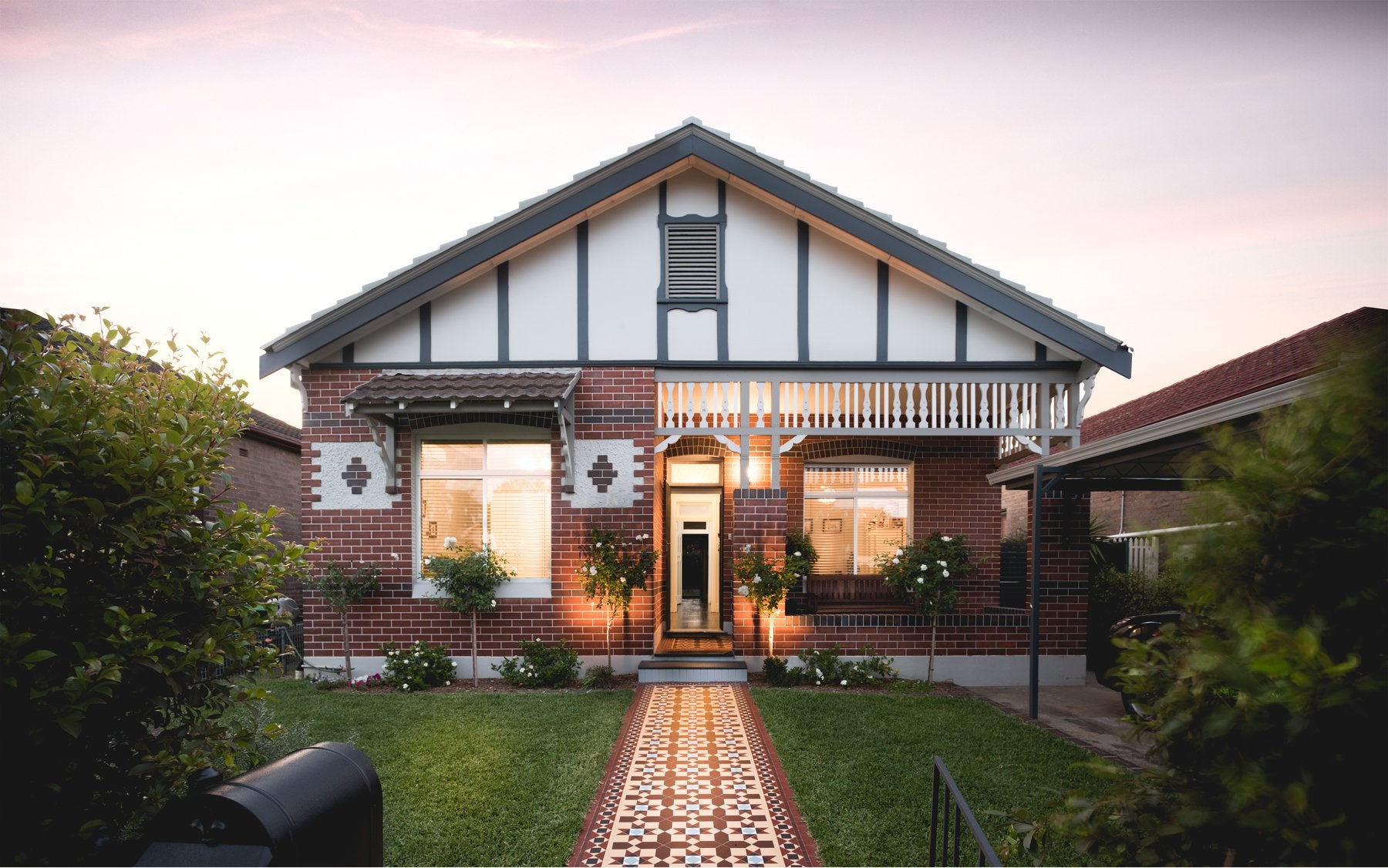
Sydney is the oldest city in Australia, and as such it has the widest array of architectural styles of any city in the country. We have tiles to satisfy your restoration/ renovation needs no matter where you live - be it a Georgian/Regency cottage in the Rocks, a Victorian terrace in Paddington or Newtown, a Federation villa in Strathfield or Chatswood, a California Bungalow in Kensington or Abbotsford, an Art Deco apartment in Bondi or Manly, or a Stockbroker Tudor mansion in Waitara, we have something to satisfy your tiling needs. And let’s not forget all those beautiful houses in Wollongong, Newcastle & the Hunter Valley.
The story behind Sydney’s first heritage tile provider
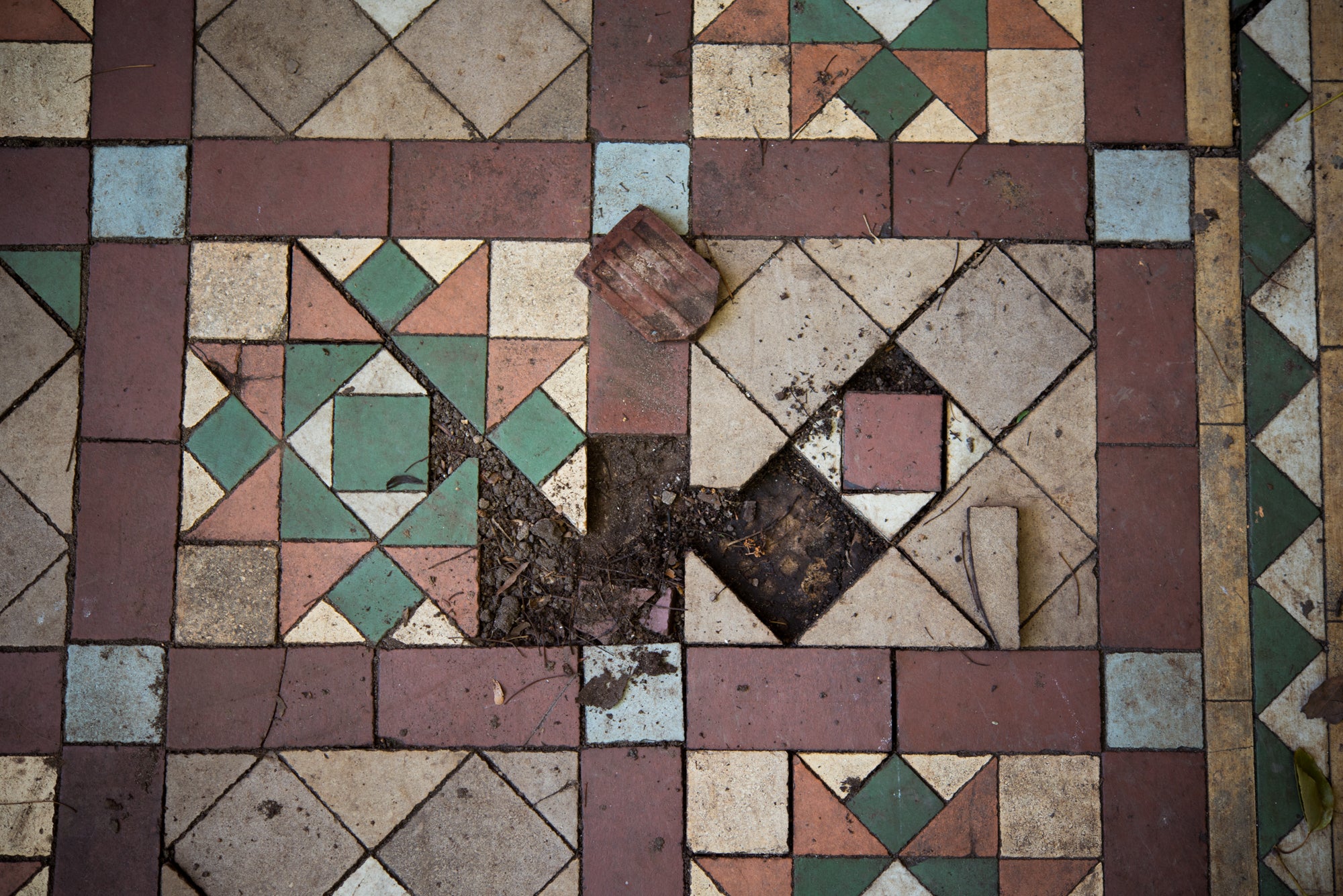
It may be hard to believe today, but 50 years ago people interested in restoring their Victorian terraces in Paddington or Balmain - Sydney’s earliest suburbs to undergo gentrification - had no option but to use slate, dark brown quarry tiles or glossy Japanese mosaics when it came to tiling their floors.
As 1988 and the Bi-Centennial loomed ever larger on the cultural horizon of Australia in general, and Sydney in particular, the desire to save, preserve and restore our nation’s rapidly dwindling architectural heritage turned from a trend to a tidal wave. Books on authentic colour schemes, authentic timber mouldings, authentic carpets and fabrics proliferated … but nothing on authentic heritage tiles. Things, however, were about to change and, in large part, due to the efforts of one man*, and three heritage projects**.
In 1976 a fire destroyed the last remaining Victorian shopping arcade in Sydney - the Strand Arcade. Over the next two years the Strand, which had been described at the time of its construction in 1892 as, “the finest public thoroughfare in the Australian colonies”, was restored to its former glory, including its tessellated floors**.
In 1981 the National Trust approached the tiler responsible for restoring the Strand floor to undertake the restoration of the tessellated floors at Curzon Hall in Marsfield. It was about to be vacated by the Catholic seminary which had occupied the premises for 60 years. Curzon Hall, a Federation Free Classical/Romanesque mansion, built on a grand scale in 1897-99, was to be restored and converted into a function centre. The restoration included the extensive tessellated entrance hall and several reception areas**. Soon after completing this project Olde English Tiles was founded by a gifted young Italian tiler - Antonino Gaudioso*.
Antonino had arrived in Sydney at the age of 21, after four years apprenticed to his uncle, a master builder and master tiler. During that period they worked on ancient buildings and churches up and down the peninsula and parts of Germany, specializing in stone and glass mosaic restoration. Unquestionably, the highlight of his apprenticeship came with their involvement in the restoration of the magnificent Duomo in Milan. By the time he graduated, Nino had achieved the title of ‘maestro’. While engaged in a tiling project in Bellevue Hill soon after arriving, his skill was recognized by Leslie Walford, arguably Sydney’s pre-eminent interior designer of the time. Walforde determined that Nino should work exclusively for him, on his many design commissions for the city’s well-to-do. It was during this period that he became familiar with the richness of Sydney’s architectural heritage.
The third and most prestigious of the heritage projects was the Queen Victoria Building in the heart of Sydney. In 1984, after decades of debate concerning the future of the QVB, debate which included its demolition, finally, restoration work was commenced. Two years and $86 million later the work was completed, with exemplary features including the trachyte stairs and the many tessellated floors** being particular highlights. In the words of Yap Lim Sen, chairman of the co-developers Ipoh Ltd Australia, “If there is a lesson for heritage projects from this, it is that heritage buildings should not only be restored but should be put to a use that will make them freely accessible to the community at all times”.
Numerous commissions from the National Trust and the NSW Heritage Council were to follow. The company was engaged to work on many of the country’s historic landmark buildings, restoring or reinstating their tessellated floors - buildings such as Kirribilli House (the Australian Prime Minister’s official Sydney residence), St Andrew’s & St Mary’s Cathedrals (Sydney), St Patrick’s Cathedral & the Rialto Building (Melbourne) & Brisbane Town Hall, to name just a very few.
The variety and scope of civic and commercial projects that soon followed was head-spinning - from cathedrals and churches, banks, train stations, schools, hospitals, town halls, function centres, shops and arcades to theatres, restaurants and pubs; all experienced the transforming magic of tessellated tiles from Olde English Tiles.
But along with these commercial and civic commissions was a growing demand from the general public for these authentic heritage tiles and the specialist skills required to install them. In 1986 the Olde English Tile Factory, as it was then called, moved from temporary premises to 73-79 Parramatta Rd, Camperdown, so as to better serve its rapidly expanding customer base - both local, interstate and international, and to meet the demands for its world class tessellated & mosaic products and installation services. It would remain its headquarters for the next 20 years.
This period saw Olde English achieve a number of significant milestones: in 1986 Nino purchased a partially derelict historic building on Sydney’s lower north shore - Northwood, to save it from demolition and preserve it for future generations by completely restoring it. The building, which possessed significant heritage and architectural significance, had been designed in 1878 by the famous English architect Edmund Blacket (of Sydney University fame); 1989 saw the introduction of a new range of feature wall tiles, the first of many; in 1992 Olde English Tiles was introduced into the European market via trade exhibitions in Italy and England; in 1993 the company acquired its own roller-hearth kiln and commenced production of encaustic floor tiles and decorative wall tiles. It also opened a showroom in Melbourne; after months of research and negotiations with members of the Tobwabba Art Group, the company released the Aboriginal Theme Tile Collection, the first of its type in Australia. It subsequently won the Premier Award for this collection at Tilex 1995.
This collaboration with Aboriginal artists to create something radically innovative within the Australian tile industry was just the latest and most daringly original example of Olde English’s willingness to respond to the tastes and needs of the market. As the demand for Victorian terraces gradually gave way to Federation cottages, and then California Bungalows and Art Deco apartments, so too did the company’s design team adjust its vision and efforts to create products that would address the growing market demand for new, aesthetically appropriate wall and floor products.
In 2007, after 20 years at 73-79 Parramatta Rd, Camperdown the company relocated to the other side of Parramatta Rd, where it continued to serve the community of period home-owners throughout the greater Sydney metropolis and interstate. Its portfolio of Victorian, Federation & Art Deco decorative wall tiles was complemented by ranges of French Provincial, Mexican, Delft and country-style tiles, all hand-painted by an in-house artist and fired in its own kilns.
The company was one of the first to recognize the renewed interest in hexagonal porcelain mosaics. Together with Winckelmans, the world renowned French manufacturer of porcelain tessellated and mosaic tiles, Olde English developed a collection of mosaic designs in an incomparable variety of shapes, sizes, colours and patterns, suitable for wall and floor use in civic, commercial and residential situations. To date, the Classic Collection of mosaic tiles has been employed for the restoration of Brisbane Town Hall, the fit-out of the Hermes boutiques in Melbourne, Chadstone & Sydney, the Empire Hotel in Annandale & the Imperial Hotel in Erskineville, Fontaine & the Rex Bistro in Potts Point being just the tip of the iceberg.
The range’s unique ability to realize the creative vision of designers and architects has recently been eloquently expressed in its use by leading Sydney-based architect Scott Weston, who chose these porcelain mosaics in tones of pink and green for the courtyard floor of a terrace house in Sydney’s Inner West.
Of course, underpinning these and myriad other mosaic and tessellated tiling projects throughout Sydney and Melbourne has been Olde English Tiles supply & fix division. However this service is not limited to these two cities. Recently the company was engaged to undertake a major supply & fix project in Hobart.
Since its establishment in 1982 many awards have come Olde English Tiles way, but perhaps none was more deserving than the one the company’s founder, Antonino Gaudioso, received in 2011 - the Tile Today “Industry Achievement Award” - for ‘excellent service to the tile industry’. It was an acknowledgement of a lifetime of commitment to the values expressed in the company’s Vision & Mission statements:
“To honour our architectural heritage by preserving and restoring it, to enhance the built environment by providing quality products and services, and to contribute to the cultural richness of our nation’s future”, and “To import, manufacture, supply and install tiles of the highest quality for the period restoration market, and for all people who appreciate and desire beautiful tiles”.
But the story doesn’t end there. The latest chapter has just begun, with a recent relocation to a stylish new showroom, still in the Camperdown/Annandale area - 130 Pyrmont Bridge Rd, Annandale. Once again, a new move signifies new growth: new products, fresh ideas, attitudes and ways of meeting the needs and demands of an evolving marketplace.
We look forward to assisting you with your renovation,
The team at Olde English Tiles
